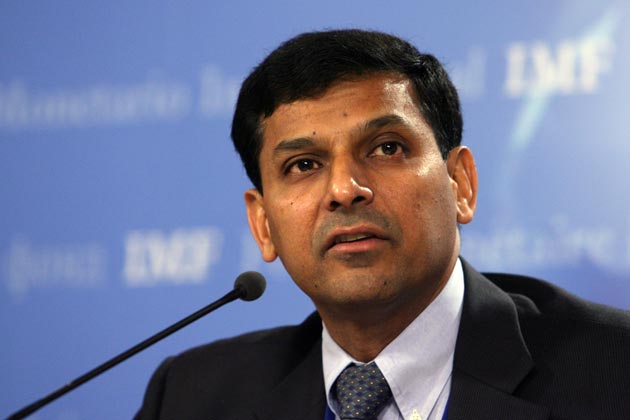Inflation, rupee may force RBI to keep rates on hold
 New Delhi, Sep 18 : Reserve Bank of India Governor Raghuram Rajan is likely to maintain his predecessor Duvvuri Subbarao's “hawkish” policy and keep key rates on hold due to continued inflationary pressure and the volatility in rupee, analysts say.
New Delhi, Sep 18 : Reserve Bank of India Governor Raghuram Rajan is likely to maintain his predecessor Duvvuri Subbarao's “hawkish” policy and keep key rates on hold due to continued inflationary pressure and the volatility in rupee, analysts say.
Most analysts feel that the sharp jump in the headline inflation in August has made choices tougher for Rajan, who will be holding his first monetary policy meeting Friday, barely a fortnight after taking charge at the Mint Street in Mumbai.
"At this juncture, the RBI is largely expected to maintain status quo on rates,” Bhupali Gursale, economist at Angel Broking, told IANS.
She said the RBI's focus would remain on curbing inflationary pressure and rupee volatility.
The wholesale price based inflation, the country's key indicator of price movement, soared to six-month high of 6.1 percent in August as compared to 5.79 percent in the previous month and 8.01 percent in the corresponding month of last year.
The more worrying is food inflation that surged to 18.18 percent, the highest level in nearly three years.
The Indian rupee hit a record low of 68.85 against a dollar Aug 28. Although it has recovered and gained almost eight percent since touching the record low, analysts say the downward risk on the currency remain due to looming external and domestic problems.
Arun Singh, senior economist at Dun & Bradstreet India, said the RBI would maintain a status quo on policy rate keeping in mind the rupee depreciation and renewed inflationary pressure.
"Rupee depreciation and a sharp rise in WPI inflation will continue to restrict further easing of the policy rate in short-term,” Sinha told IANS.
Ratings and consultancy firm Crisil said the RBI is expected to leave interest rates unchanged not only in this week's policy review but also for the rest of the year.
"Loosening of monetary policy to support growth runs the risk of creating a situation of high generalised inflation as the supply shocks persist,” Crisil said in a research note.
Gursale said Rajan may ease some of the measures announced by his predecessor to ensure stability in the currency markets.
Subbarao, whose term as the RBI governor ended Sep 4, announced a series of measures, including hike in interest rates on short-term borrowings and limit on cash injections into the banking system, in a bid to curb rupee slide.
Bureaucrat-turned-banker Subbarao was criticised by many analysts and policymakers for maintaining a tight monetary policy post 2008-09 global financial crisis, despite the slowdown in economic growth.
The country's gross domestic product (GDP) growth slumped to a decade low of five percent in the financial year ended March 31, 2013. The growth is unlikely to improve much this year.
Prime Minister Manmohan Singh's economic advisory council recently sharply lowered the economic growth forecast for the current fiscal to 5.3 percent from its earlier projection of 6.4 percent. The panel headed by former RBI governor C. Rangarajan has pegged year-end inflation target at 5.5 percent as against an average of 7.4 percent registered in the previous fiscal.
"We expect that the RBI will keep the repo rate on hold and the currency stabilisation measures in place," said Leif Eskesen, chief economist for India at HSBC.
In its previous policy review announced July 30, the central bank had kept all key rates unchanged and lowered the growth forecast for the current fiscal to 5.5 percent from its earlier projection of 5.7 percent.
Justifying the move then, Subbarao said that India was caught in a classic “impossible trinity” - low growth, high inflation and depreciation in the value of currency.
Key policy rates that determine liquidity and cost of lending and borrowings in the country include repo rate, reverse repo rate and cash reserve ratio. (IANS)
The repurchase or the repo rate, the interest that commercial banks pay to the RBI on short-term borrowings currently stands at 7.25 percent, and reverse repo rate is at 6.25 percent.
The cash reserve ratio (CRR), or the share of deposits banks must keep with the central bank, stands at 4 percent.